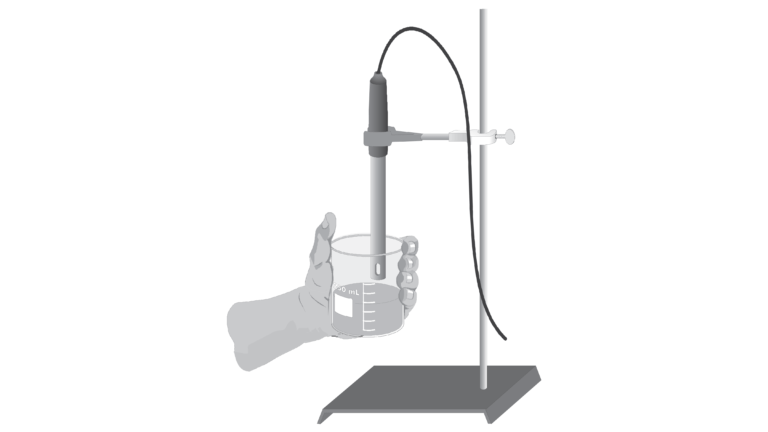Conductivity of Solutions: The Effect of Concentration
Experiment #14 from Chemistry with Vernier
- Education Level
- High School
- Subject
- Chemistry

Introduction
If an ionic compound is dissolved in water, it dissociates into ions and the resulting solution will conduct electricity. Dissolving solid sodium chloride in water releases ions according to the equation:
In this experiment, you will study the effect of increasing the concentration of an ionic compound on conductivity. Conductivity will be measured as concentration of the solution is gradually increased by the addition of concentrated NaCl drops. The same procedure will be used to investigate the effect of adding solutions with the same concentration (1.0 M), but different numbers of ions in their formulas: aluminum chloride, AlCl3, and calcium chloride, CaCl2. A Conductivity Probe will be used to measure conductivity of the solution. Conductivity is measured in microsiemens per centimeter (μS/cm).
Objectives
In this experiment, you will
- Use a Conductivity Probe to measure the conductivity of solutions.
- Investigate the relationship between the conductivity and concentration of a solution.
- Investigate the conductivity of solutions resulting from compounds that dissociate to produce different number of ions.
Sensors and Equipment
This experiment features the following sensors and equipment. Additional equipment may be required.
Option 1

Option 2

Ready to Experiment?
Ask an Expert
Get answers to your questions about how to teach this experiment with our support team.
- Call toll-free: 888-837-6437
- Chat with Us
- Email support@vernier.com
Purchase the Lab Book
This experiment is #14 of Chemistry with Vernier. The experiment in the book includes student instructions as well as instructor information for set up, helpful hints, and sample graphs and data.

